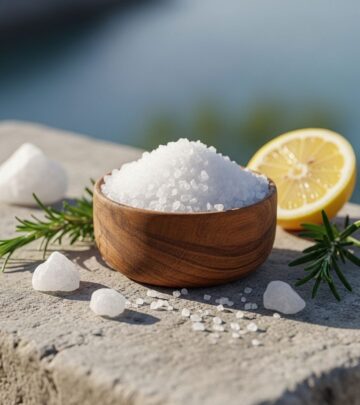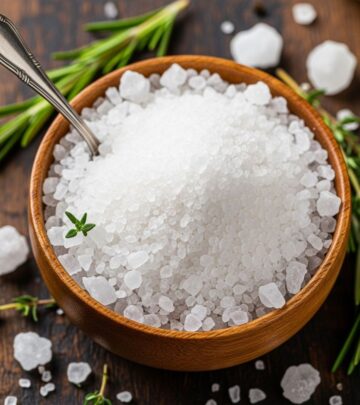Effective Home Remedies for Nausea: Natural Relief Without Medication
Discover how natural home remedies can help relieve nausea and promote digestive comfort.

Table of Contents
- Introduction
- Common Causes of Nausea
- Ginger: A Time-Tested Remedy
- Peppermint: Soothing Digestive Discomfort
- Acupressure: Pressure Points for Relief
- Lemon: Citrus for Calming the Stomach
- Fennel Seeds: Antispasmodic Benefits
- Chamomile Tea: Calm Mind and Stomach
- Cinnamon: Digestive Aid
- Other Natural Remedies
- Diet and Lifestyle Tips
- When to See a Doctor
- Frequently Asked Questions (FAQs)
Introduction
Nausea is a common and uncomfortable sensation that can stem from a variety of causes, including pregnancy, motion sickness, digestive issues, stress, or even certain medical treatments. While over-the-counter and prescription medications are available, many people seek natural, home-based remedies for relief due to concerns about side effects or a preference for holistic approaches. This article explores the most effective home remedies for nausea, supported by both traditional use and modern research, along with practical tips for managing nausea at home.
Common Causes of Nausea
Nausea can be triggered by numerous factors, including:
- Pregnancy (morning sickness): Hormonal changes often lead to nausea, especially in the first trimester.
- Motion sickness: Travel by car, boat, or plane can upset the inner ear, leading to nausea.
- Digestive issues: Indigestion, bloating, food poisoning, or irritable bowel syndrome (IBS) can cause stomach discomfort.
- Infections: Viral or bacterial infections may provoke nausea as part of the body’s immune response.
- Medical treatments: Chemotherapy and certain medications can have nausea as a side effect.
- Stress and anxiety: Emotional factors can directly impact digestive health.
Understanding the underlying cause can help in selecting the most appropriate remedy.
Ginger: A Time-Tested Remedy
Ginger is perhaps the best-known natural remedy for nausea, with a long history of use across cultures. Its effectiveness is supported by studies showing benefits for pregnancy-related nausea, chemotherapy-induced nausea, and general stomach upset.
How Ginger Works
Ginger contains bioactive compounds that may work similarly to some anti-nausea medications by blocking certain receptors in the digestive system and accelerating gastric emptying. Its anti-inflammatory and antioxidant properties also contribute to its soothing effects.
How to Use Ginger
- Ginger tea: Steep fresh ginger slices in hot water for 5–10 minutes.
- Ginger ale: Choose brands with real ginger and low sugar.
- Fresh ginger: Chew a small piece or grate it into drinks and meals.
- Supplements: Ginger capsules or lozenges are available for convenience.
Safety and Side Effects
Ginger is generally safe, but excessive amounts may cause heartburn or abdominal discomfort. Most experts consider it a safe option even during pregnancy, though it’s wise to consult a healthcare provider before use.
Peppermint: Soothing Digestive Discomfort
Peppermint is valued for its ability to relax stomach muscles and reduce spasms in the digestive tract, making it effective for nausea, especially when related to indigestion or IBS.
How Peppermint Works
The menthol in peppermint acts as a natural antispasmodic, calming the gastrointestinal tract and easing nausea and bloating.
How to Use Peppermint
- Peppermint tea: Steep fresh leaves or tea bags in hot water for 5 minutes.
- Peppermint oil: A few drops in a diffuser or applied topically (diluted) can help, though ingestion should be avoided unless under guidance.
- Capsules: Enteric-coated peppermint oil capsules are available for digestive support.
Precautions
Peppermint may worsen symptoms in people with gastroesophageal reflux disease (GERD) due to its relaxing effect on the esophageal sphincter.
Acupressure: Pressure Points for Relief
Acupressure, a technique derived from traditional Chinese medicine, involves applying pressure to specific points on the body to alleviate symptoms like nausea.
The P6 (Neiguan) Point
The P6 point, located about two inches above the wrist on the inner forearm, is the primary acupressure target for nausea relief. Applying firm, gentle pressure for a few minutes can help reduce symptoms.
How to Use Acupressure
- Manual pressure: Use your thumb to press the P6 point for several minutes.
- Wristbands: Acupressure wristbands apply constant pressure to the P6 point and are widely available for motion sickness and pregnancy nausea.
Lemon: Citrus for Calming the Stomach
The scent of lemon and the act of drinking lemon water can be surprisingly effective in reducing nausea.
How Lemon Works
Citrus aromas are known to reduce nausea, and the natural acidity of lemon may help settle the stomach. Lemon is often combined with ginger or peppermint for enhanced relief.
How to Use Lemon
- Lemon water: Mix freshly squeezed lemon juice with water and sip slowly.
- Aromatherapy: Inhale lemon essential oil or place a fresh lemon slice nearby to breathe in the scent.
Fennel Seeds: Antispasmodic Benefits
Fennel seeds have been traditionally used to treat digestive complaints, including nausea, especially when caused by indigestion or bloating.
How Fennel Works
Fennel seeds possess antispasmodic properties, helping to relieve nausea and improve digestion.
How to Use Fennel
- Chew seeds: Chew a small amount of fennel seeds directly after meals or when nausea strikes.
- Fennel tea: Steep 1–2 teaspoons of fennel seeds in hot water for a few minutes, then strain and drink.
Chamomile Tea: Calm Mind and Stomach
Chamomile tea is well-known for its calming effects, which can be particularly useful for nausea related to anxiety or stress.
How Chamomile Works
Chamomile has mild sedative properties, helping to relax both the mind and the digestive system.
How to Use Chamomile
- Tea: Steep 1–2 chamomile tea bags or fresh flowers in hot water for 5 minutes.
- Sip slowly: Drinking chamomile tea slowly can help soothe an upset stomach.
Cinnamon: Digestive Aid
Cinnamon is known for promoting digestion and reducing nausea, particularly related to morning sickness or motion sickness.
How Cinnamon Works
Cinnamon’s compounds may reduce inflammation in the digestive tract and improve blood flow, helping to alleviate nausea.
How to Use Cinnamon
- Cinnamon tea: Add a teaspoon of ground cinnamon to hot water and sip slowly.
- Cinnamon sticks: Place a cinnamon stick in your tea or hot water for extra flavor and benefit.
Other Natural Remedies
Several additional remedies may also help relieve nausea, depending on the cause:
- Vitamin B6: Known to reduce pregnancy-related nausea.
- Breathing exercises: Deep, slow breathing can help calm the body and ease nausea.
- Hydration: Sipping small amounts of water or clear fluids can help, especially after vomiting.
- Dietary adjustments: Eating small, bland meals and avoiding heavy, greasy, or spicy foods may reduce nausea.
- Relaxation techniques: Reducing stress through meditation or gentle exercise can help manage nausea caused by anxiety.
Diet and Lifestyle Tips for Managing Nausea
In addition to specific remedies, certain dietary and lifestyle changes can support overall digestive health and reduce the frequency and severity of nausea:
Eating Habits
- Eat small, frequent meals instead of large ones.
- Avoid lying down immediately after eating.
- Choose bland, easy-to-digest foods like crackers, toast, or bananas.
Hydration
- Sip fluids slowly throughout the day.
- Try clear broths, herbal teas, or electrolyte solutions if vomiting occurs.
Environment
- Avoid strong odors that may trigger nausea.
- Ensure good ventilation in living and workspaces.
Activity
- Engage in light activities like walking to aid digestion.
- Practice relaxation techniques such as deep breathing or meditation.
When to See a Doctor
While most cases of nausea can be managed at home, certain situations require medical attention:
- Nausea accompanied by severe abdominal pain, chest pain, or fainting.
- Persistent vomiting or inability to keep fluids down for more than 24 hours.
- Signs of dehydration, such as dry mouth, sunken eyes, or decreased urination.
- Blood in vomit or stools.
- Unexplained weight loss associated with chronic nausea.
- Nausea during pregnancy that is severe or persistent, especially if accompanied by headaches or vision changes.
Consult a healthcare provider if you are unsure about the cause of your nausea or if symptoms worsen.
Frequently Asked Questions (FAQs)
Is ginger safe for everyone?
While ginger is generally safe for most people, excessive intake may cause heartburn. Those with gallstones or on blood-thinning medications should consult a doctor before using ginger supplements.
Can peppermint help with all types of nausea?
Peppermint is especially helpful for nausea related to digestive upset or IBS, but may not be suitable for those with GERD due to potential worsening of symptoms.
How does acupressure relieve nausea?
Acupressure stimulates the P6 point, which is believed to influence the part of the brain that controls nausea, offering relief for motion sickness, morning sickness, and post-operative nausea.
Are these remedies effective for severe nausea?
Mild to moderate nausea often responds well to home remedies. However, severe, persistent, or unexplained nausea should be evaluated by a healthcare professional to rule out serious underlying conditions.
Can lemon and ginger be used together for nausea?
Yes, combining ginger and lemon in tea or as a drink provides the benefits of both remedies and may enhance relief.
Conclusion
Nausea is a common, often unpleasant condition with many potential causes. Fortunately, natural home remedies such as ginger, peppermint, acupressure, lemon, fennel, chamomile, and cinnamon can offer safe, effective relief for many people. These remedies can be easily incorporated into daily routines and are especially valuable for those seeking alternatives to conventional medication. However, severe or persistent nausea warrants medical attention. By combining these remedies with sensible dietary and lifestyle changes, most people can manage nausea effectively and maintain greater comfort and well-being.
References
- https://www.centralpharmacymi.com/blogs/10-natural-remedies-for-nausea-that-really-help
- https://www.healthline.com/nutrition/nausea-remedies
- https://sesamecare.com/blog/nausea-home-remedies
- https://www.medicalnewstoday.com/articles/320877
- https://lyphe.com/natural-remedies-for-nausea
- https://ketteringhealth.org/natural-ways-to-cope-with-nausea/
- https://www.cancer.org/cancer/managing-cancer/side-effects/eating-problems/nausea-and-vomiting/managing.html
- https://www.henryford.com/blog/2019/05/7-remedies-for-taming-nausea
- https://www.webmd.com/digestive-disorders/remedies-for-nausea-upset-stomach
Read full bio of medha deb












